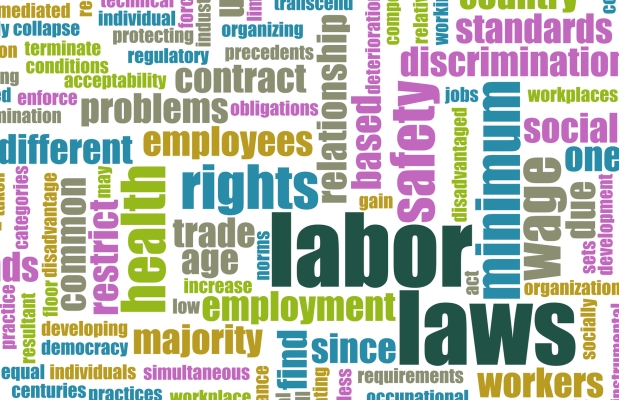
©Depositphotos.com/Margaret Paynich
Bain v. California Teachers Association, recently filed in CA challenges the requirement that the political portion of the dues payment be made in order to receive the extra union benefits from maternity and disability coverage to life insurance to legal representation.
But the facts of the case and the story of the primary plaintiff is very interesting to read.
Bhavini Bhakta, 33, is an award-winning teacher, a lifelong Democrat and a “100 percent believer in my union.”
Bhakta saw her union dues working against her in spring 2013 when she went to Sacramento to testify in support of Senate Bill 441, which would have changed teacher evaluations in much of the state from a binary “satisfactory” or “unsatisfactory” rating to a four-tiered system that would provide more feedback and accountability. She was more than a little stunned and annoyed to hear a CTA lobbyist testify that teachers “don’t want this” and would find such evaluations “degrading.” The bill died when six senators failed to vote.
“That’s where it hit me: There is a big, big change that needs to happen,” Bhakta said. “We have a very monetarily equipped organization that is fighting for the exact opposite of what I and many other teachers are fighting for.”
Worse yet, that lobbying effort came out of dues deducted from the paychecks of Bhakta and other teachers.
Note to unions – not all teachers agree with your positions! AND all they are asking is that they don’t have to pay their meager “political” portion to you while still maintaining, arguably some of the more tangible benefits from maternity and disability coverage to life insurance to legal representation. They aren’t even asking you to stop or to change your position. That’s awful selfish of you.
There is something terribly wrong when a union can deny a teacher’s access to maternity benefits while providing up to $35,000 to another teacher’s criminal defense simply on the basis of whether the teacher contributes to the union’s political and lobbying causes. It’s unfair, undemocratic — and, as the lawsuit alleges, most likely unconstitutional on free-speech grounds.
Yea, I think we can all agree with that.
Huffington Post covers more of this story:
This coercion, the teachers argue, violates their constitutional right to free speech. About one in 10 teachers in California have opted out of paying the portion of dues supporting politicking and lobbying.
Across California, public school teachers are being forced to choose between important employment benefits like paid maternity leave and their own political values,” plaintiff Bhavini Bhakta, a teacher at the Arcadia Unified School District, said in a press release. “It’s unfair. I appreciate my union and want to stay a member. But I don’t want to be forced to fund political activities that contradict my core beliefs about education.”
Here is an excerpt from Randi’s response:
In a statement on Monday, American Federation of Teachers President Randi Weingarten accused StudentsFirst of hypocrisy by trying to restrict the unions’ capacity to engage in the political process at the same time that it has worked “to stifle the voices of teachers, and strip them of collective bargaining and other rights and tools to do their jobs.”
“Sadly, this lawsuit is attempting to use the First Amendment to stifle speech, not enhance it,” Weingarten said.
Notice the lack of compassion for the teachers in this case? And in terms of protecting the rights of teachers? I haven’t seen much of that – especially through this post I wrote about whether the unions are working for teachers or for themselves. If Randi thinks that the union’s free speech will be “stifled” with a few dollars less in its coffers, how does she think teachers feel when they see their money advocating directly against them? Who is really loosing the free speech?
NEA Response:
“The Bain lawsuit attacks the right of a membership organization to restrict the benefits of membership to those who actually pay dues,” Alice O’Brien, general counsel for the NEA, said in a statement. “No court has accepted the notion that providing benefits only to members violates the First Amendment. We are confident that this latest attack by StudentsFirst will be equally unsuccessful.”
Hmm, ok. So, I know that the Abood decision required that individuals benefiting from the collective bargaining to pay the “agency fees” of up to 70% of the union dues. Yet “membership” only counts for the remaining 30-40% of the dues? Even we believed that….let’s tease this out some more.
In a previous post I tried to unwrap the union dues to see where the money is going. Here’s what I calculated for CTA:
Lets look at some numbers. Below, this article tells me that CA union dues are ~ $1,000/teacher/year. This fact sheet tells me that CTA represents ~ 325,000 educators. Let split the difference here: “they may not opt out of the sixty to seventy percent of their dues the union determines is devoted to collective bargaining” and just say 35 % political and 65% agency fees for “collective bargaining.”
$1,000 x 325,000 = $325,000,000!! so many zeros I was blinded by the computer trying to read them! OK so lets split that into political (35%) and agency fees (65%)
Political = $113,750,000; Agency fees= $211,250,000
So I would argue that unions spend more than the “allocation” for political activities by dipping into the agency fees. But I digress.
Let’s assume the $113.75 million is spent on political activities. Is that also where the Maternity, disability and legal representation are also paid from? Because that is the pool of money of which you have to pay into to to get the benefits.
But, I am willing to bet that the costs for those extra benefit programs actually derives from the pool of agency fees which is $211.250 million. Assuming that’s correct and all individuals benefiting from the collective bargaining must pay the agency fee – wouldn’t they also be eligible for ALL of the benefits paid for out of the agency fees. I mean they are already paying the outrageous agency fee that no one can explain to me how it is allocated.
So the NEA’s assertion that they can decide which benefits members get and which they don’t, I’d say these teachers are ALREADY paying you an enormous “agency fee” and you are going to tell them they can’t have the extra benefits because they don’t meet your definition of membership? I bet you every teacher feels like a member since they pay the agency fee against their will.
More from the LA Times
The lawsuit argues that federally guaranteed 1st Amendment rights apply in this case, and that they should override practices in California.
“The 1st Amendment does not tolerate this unequal treatment based on a teacher’s political views,” said attorney Theodore J. Boutrous of Gibson, Dunn & Crutcher, which is handling the case.













